Many marketing and IT departments are tasked with the responsibility of creating, renovating and/or managing the company’s intranet. The productivity and resourcefulness of dozens, hundreds or perhaps thousands of employees is in your hands. How do you measure up to expectations?
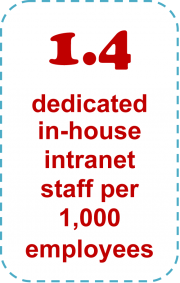
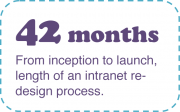
Naturally, treating the intranet as you would any other major initiative is the ideal approach. Starting with a corporate-approved foundation of established objectives, priorities and expectations will set the stage. When dealing with multiple departments and a long list of “top-priority” content, how can everyone agree on one set of objectives?
At the core of any intranet are these universal goals:
- Manage the user experience and overcome fundamental challenges
- Engage and motivate your employees
- Focus on and support their top tasks
- Keep them in-the-know
- Build buy-in and knowledge sharing
- Track and monitor usage to better understand each audience segment
- Create a team to strategize, plan and execute a user experience that accomplishes the organization’s overall short-term and long-term goals to:
- Be a central source for all employee communication and resources
- Establish and encourage collaboration and knowledge sharing among various employee segments
- Help employees swiftly and easily locate and utilize personal data, news, updates, information, tools, resources and materials, ultimately improving their job knowledge and productivity
To Outsource, or Not?


Many organizations simply do not have the internal staff to execute all intranet tasks. You may need to source one, two or more outside resources for support. Ensuring that all of your consultants are on the same page, and explicitly understand your intranet goals is essential to delivering the compelling experience to your intranet users. You’re looking for partners that can help you make the intranet as graphically appealing as it is user-friendly.
The key to the ideal intranet is personalization and customization to ensure audiences enjoy a positive and rewarding user experience. To that end, here are some of the strategies we recommend:
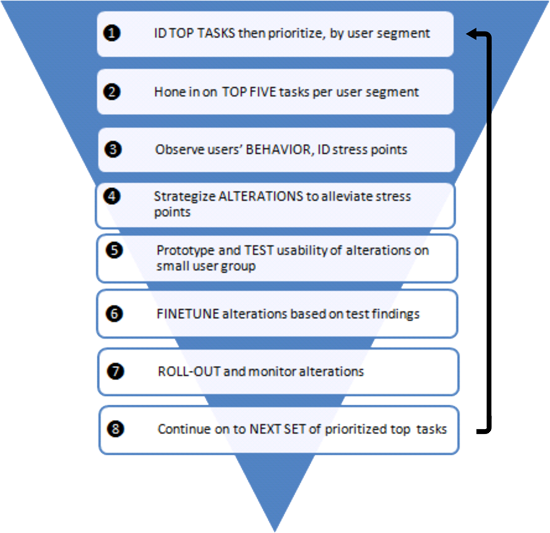
In addition to design, we need to be cognizant of how we present different types of content to different user segments. There are a variety of features and functionality that will fuel your ability to add value to your users’ daily intranet experience. For example:
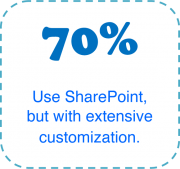
- Predefined content tagging to establish news/events/info categories or “channels” will present the most relevant hightlights to each segment first. User profile data will dictate the categories that are relevant to each user. News and event feeds will present the appropriate category content to each user when he/she logs in.
- Notifications can present an alert for users when there is a system-triggered or user-generated change to their status or relevant content.
- Regular email reminders can highlight bite-sized nuggets of intranet features, improvements, updates, etc. to continuously educate your user base, and build intrigue and trust among audience segments. Tracking clickthroughs of emails will help finetune messaging and the types of reminders that are of most interest to each segment.
Experiment, Test, Measure & Repeat
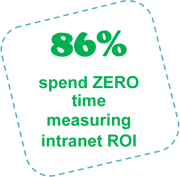
Testing different content, design and functionality approaches will generate the best long-term results. Develop test pages to examine how the changes affect your user segments. Begin with small test groups, refine the changes and retest on larger user groups. Adopt enhancements that prove to improve task-completion rates for the most test users.
Once you have rolled-out your first set of improvements, monitor employee behavior with web analytics. Track navigation paths, top search terms and task performance targets. Generate report summaries on a quarterly basis to identify areas for improvement.
We recommend a task-centric strategy per user segment because improved task performance can lead directly to improved productivity and user satisfaction. Solutions that can directly impact intranet task performance are often the easiest for your organization to buy into and adopt. This philosophy will produce positive results early on, demonstrating success in your approach and build buy-in from decision makers for the ongoing efforts and improvements to come.
Stats sources:
- http://www.nngroup.com/articles/intranet-design/
- From inception to launch, an intranet redesign process lasts for 42 months—or about 3.5 years.
- 80% of Jakob Nielsen’s Best Intranets 2013 use outside consultants on design, development, usability research, planning, project management, and scheduling.
- 70% of Jakob Nielsen’s Best Intranets 2013 used SharePoint, but with extensive customization.
- The average intranet team size is 27 people or 1.4 intranet staff members per thousand employees.
- http://www.hrcommunication.com/Main/Articles/Social_intranet_prevalence_rising_but_satisfaction_7311.aspx
- Less than 30% percent of companies get regular contributions from departments outside of communications, human resources, marketing, and information technology.
- 86% of intranet-hosting companies don’t take the time to measure intranet ROI.